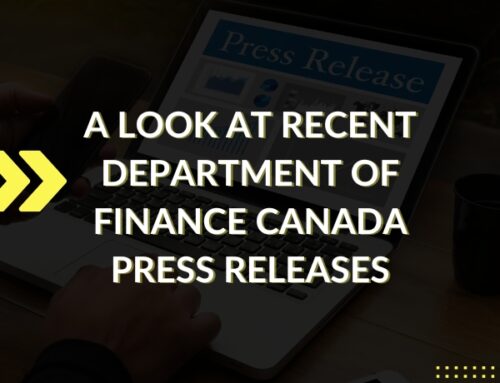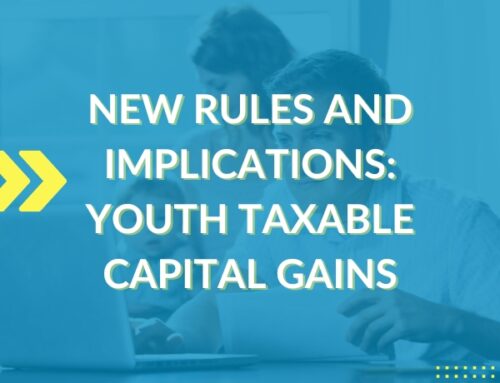Published October 23, 2023.
As addressed in previous blogs on Bill C-47 (which can be found HERE for Part 1 and HERE for Part 2), Canada’s taxation landscape has recently undergone a significant transformation. Among the newly introduced tax mechanisms that took effect on June 22, 2023 are the “notifiable transactions,” as part of the enhanced mandatory disclosure rules. This blog will shed light on what these are and how they impact you and your clients, based on the latest CRA guidelines as of September 6, 2023.
What Exactly Are Notifiable Transactions?
The concept of “notifiable transactions” introduces new reporting obligations aimed at providing the Canada Revenue Agency (CRA) with detailed information about certain types of transactions. Specifically, these transactions could be either flagged as abusive tax avoidance schemes or be marked as transactions of interest where more information is needed for assessment.
The Minister of National Revenue, with the approval of the Minister of Finance, has the authority to designate transactions as notifiable. The CRA will detail these transactions on its website, specifying the fact patterns, outcomes, and even example scenarios to guide taxpayers and advisors.
The Devil is in the Details: “Substantially Similar”
At the core of the new guidelines is the term “substantially similar,” intended to be broadly construed in favor of disclosure. This means even slight variances in tax strategy, involved entities, or tax consequences don’t necessarily give you an out. According to CRA’s guidance the legislation is clear: when in doubt, disclose.
Reporting Requirements
Reporting requirements under these provisions are stringent, with timelines defined down to the day. The obligated parties must report to the CRA within 90 days from the earlier of two points: the day the parties become contractually obligated to undertake the transaction or the day the transaction actually takes place.
Who Is Impacted?
Taxpayers: Any taxpayer engaging in a notifiable transaction or a “substantially similar” one.
Advisors & Promoters: These rules also affect those who offer schemes similar to notifiable transactions, including non-arm’s length parties entitled to fees for these transactions.
Professionals like CPAs: Whether you are directly advising on such transactions or are in an ancillary role, the new guidelines could require you to act.
Exemptions, Loopholes, and Traps
Solicitor-Client Privilege: Information deemed under this category is exempt from disclosure requirements.
Limited Obligation for Advisors: Advisors are required to file only if they know or reasonably should know about their filing requirement. So, for CPAs in purely advisory roles, especially those not specializing in tax law, the reporting requirement may not apply.
Employee and Partner Protections: If a firm or employer has filed the required information return, individual employees or partners are deemed to have met their reporting obligations. However, CPAs should ensure that their firms are compliant to avoid individual liabilities.
Clerical Exemptions: Staff involved solely in clerical or secretarial tasks are exempt from reporting requirements.
Due Diligence Safeguards
Another noteworthy element is the emphasis on due diligence. If you or your client exercises adequate care to determine whether a transaction should be notifiable, you may be exempt from reporting requirements. A prudent way to do this is by consulting experts and documenting every step of your inquiry meticulously.
Practical Steps for CPAs
Constant Vigilance: Given that notifiable transactions will be listed on the CRA’s website, staying updated is non-negotiable.
Extensive Documentation: Meticulously document all actions taken for due diligence as this will be your first line of defense against any potential sanctions.
Client Communication: A proactive approach to keep your clients informed can save both you and them from future compliance headaches.
In summary, the new notifiable transactions guidelines are a game-changer in the Canadian taxation arena. As CPAs, understanding the intricacies of these new provisions is not just prudent—it’s essential. The key lies in thorough understanding, rigorous documentation, and proactive client management.
Stay ahead of the curve and continue providing exceptional services to your clients under this new regulatory landscape.
For more information on this topic, refer to CRA’s publication Mandatory Disclosure Rules – Guidance (updated as of September 6, 2023). AJAG has several courses that address many of these topics as well other relevant updates important for CPAs. Income Tax Update – 2023 authored and taught by Howard Wasserman, CPA, CA, TEP or Ethics – the Cost of Misconduct – A Study of Real CPA Ontario Disciplinary Cases (2023) or CPA Code of Professional Conduct – A Complete Refresher written and presented by David Baker, CPA, CA.
In Part 4 of this blog series, we will continue to discuss elements of Bill C-47 and the reporting requirements, and more specifically, the notion of Reportable Uncertain Tax Treatments (RUTTs).
Disclaimer
The information contained in this blog post is intended for general informational purposes only and should not be construed as legal, accounting, or tax advice. While every effort has been made to ensure the accuracy and reliability of the content, the author and publisher make no representations or warranties as to the completeness, accuracy, or applicability of any information provided.
Neither the author nor the publisher shall be liable for any errors or omissions in the content, or for any actions taken in reliance thereon. Readers are advised to consult the original legislation or other legal sources for complete and accurate information.






